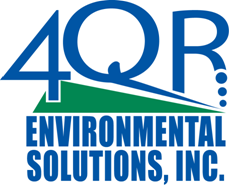As an employer and/or supervisor, are you responsible for bringing safety awareness into the company and reviewing workplace conditions to keep employees safe? Whether you are the main environmental, health and safety (EH&S) go-to person or not, you have responsibilities in keeping your people safe in the workplace. Three things you can do to keep your people safe are (1) know your employer's EH&S policies and procedures and those of the regulators, (2) lead by example in safety, and (3) listen then follow up with concerns and complaints regarding safety.
Review your company's health and safety plan on a regular basis. This plan should be updated to comply with the current regulatory requirements. If you don't have an updated safety plan, request your boss to update and implement one. If you are to assume the role as the main go-to person for safety, you can start by surveying your workplace and comparing its conditions with that of best practices. There are many resources available to show you what best practices are being used and to help keep you abreast of the changes with the Occupational Safety and Health Administration (OSHA), state agencies, an other regulatory bodies. A google scan on safety will bring up a slew of safety magazines, webinars, seminars, blogs and more ways to learn about what is going on in the safety world. Once the company's plan is updated, training should be arranged to refresh employees about the key areas of the plan and create awareness about any changes. Train everyone, including your boss.
Be a leader in safety that workers can respect and follow. As a manager or supervisor, it is important that you buy into the company's health and safety plan. If you demonstrate that safety is a priority and an expectation, then most workers will follow along. But what can you do to "walk the talk" in safety? One example is when you walk the workplace, wear the appropriate personal protective equipment (PPE). This helps to show that you take safety seriously. Another example is not bad mouthing the safety plan in front of workers. If a safety issue comes up while you are working, be honest about what you know and try to handle the situation as best you can. Contact the appropriate safety people or your EH&S consultant for assistance. And refer to the company's health and safety plan for additional guidance. If you continue to have issues with the plan, bring up those issues at an appropriate time, such as during manager meetings when the main EH&S professional for your organization and the owner, president or CEO can respond. If possible, get additional training to improve your safety awareness.
As a manager or supervisor, you may be the first person hearing the concerns and complaints from your employees. This may be when you are walking the work area and overhear a comment about PPE or engineering controls. You can often seek out the comment and concern to address it promptly before it explodes into a major problem. Listen to what the employee has to say, noting their concerns and needs. Don't blow them off. There are always ways to improve on what you are doing regarding safety. Employees are often the ones who know best about what is working well with their equipment and what is affecting their work. Communicate what you know. But be honest. If they ask a question that you don't know the answer, try to find it out or direct the employee through the appropriate channels so they can get the answers they need. And then follow up with that employee. This lets them know that you are listening and will gain their respect.
By listening and encouraging comments from your employees, you are helping to create a safety culture by awareness. You want to be honest and fair, but tough when it comes to safety. After all, proper safety is not to be taken lightly.

One of the tips to make sure that they are safe in the workplace is by giving them the right safety training. Those trainings will educate them on how to avoid the dangers in the workers and how to handle certain mishaps.
ReplyDeleteAbsolutely the right training is critical. It is so important to review and update a company's safety policies and procedures, comparing the company plan to the OSHA regulations. Your plan should clarify what training is required, when and how to provide the train, and also recommend additional training.
ReplyDelete